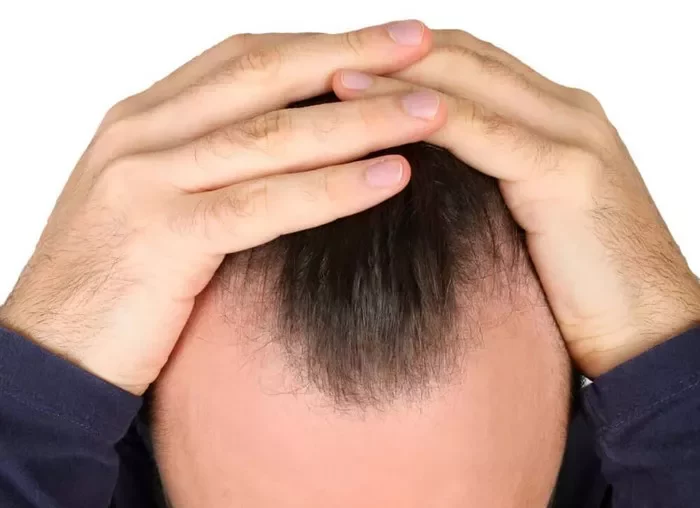In a world where personal appearances play a significant role in bolstering self-esteem and confidence, my battle with hair loss proved to be a distressing ordeal, one that not only impacted my physical appearance but also took a toll on my emotional well-being. Waking up each day to find a multitude of fallen strands adorning my pillowcase was disheartening, to say the least.
At first, I attributed my hair loss to the change in seasons, often blaming the monsoon for this seemingly transient concern. However, uncertainty gnawed at me, and I decided it was time to delve deeper into the issue. I wanted to confirm whether I was grappling with a hair loss condition known as Chronic Telogen Effluvium. To this end, I ventured into the realm of self-assessment by employing the hair pull technique, a test to discern the stage of my hair loss. This involved gently but firmly pulling 20 to 60 hairs near the scalp with my thumb, index, and middle fingers. To my dismay, I received a positive pull test, with over 10% of my hair being extracted during the process. This revelation marked the beginning of my journey, one that involved numerous home remedies and the realization that medical intervention was the path I needed to tread.
My appointment with a dermatologist was indeed an eye-opener. I learned that hair loss can be attributed to a multitude of factors, including one lesser-known but significant contributor – Chronic Telogen Effluvium. While the term may have initially sounded somewhat like a complex military mission, it sparked my curiosity. Here’s what I uncovered:
Understanding Chronic Telogen Effluvium
Dr. Rishabh Raj Sharma, MD Dermatology at the Noida International Institute of Medical Sciences and Hospital, provided valuable insights into Chronic Telogen Effluvium, or CTE. He explained that CTE is a specific type of hair loss characterized by excessive shedding from the scalp, with its primary impact being on the telogen phase of the hair growth cycle. In a typical hair cycle, around 10-15% of hair follicles are in the telogen phase, a resting period where hair naturally sheds to pave the way for new growth. However, in cases of CTE, an abnormally large number of hair follicles simultaneously enter this phase, resulting in visible hair thinning and increased shedding.
Here are some of the underlying causes that were contributing to my excessive hair shedding:
1. Nutritional Deficiencies: Essential nutrients such as iron and vitamin D, when lacking, can disrupt the normal hair growth cycle, potentially leading to CTE. Given my dietary choices, this could have been a contributing factor.
2. Hormonal Imbalances: Conditions like polycystic ovarian syndrome (PCOS), thyroid disorders, or menopause can trigger CTE. I had been dealing with hypothyroidism for four years, making it a potential cause.
3. Stress and Emotional Trauma: Prolonged physical or emotional stress can lead to telogen effluvium, which, if left unaddressed, can transition into the chronic form. Considering my demanding job and the constant stress it entails, emotional well-being was a distant aspiration.
4. Medications: Certain medications, including anticoagulants, antidepressants, and retinoids, have been linked to CTE as a potential side effect. Fortunately, I hadn’t been using any of these medications.
5. Chronic Illnesses: Conditions such as diabetes, autoimmune disorders like hypothyroidism, and chronic kidney disease can disrupt the hair growth cycle. In my case, I wasn’t diabetic, eliminating that potential factor.
6. Pregnancy: Some individuals may experience CTE after giving birth due to hormonal fluctuations during pregnancy. Fortunately, that wasn’t the case for me, as my menstrual cycle was regular.
The doctor recommended several tests to identify the root cause of my hair loss:
1. Blood Tests: These included a complete blood count (CBC), iron profile, vitamin B12 levels, and vitamin D levels to identify nutritional deficiencies. Thyroid function tests and hormonal panels were also conducted to unveil potential hormonal imbalances.
2. Hair Pull Test: A simple yet effective test that involves gently tugging on the hair to assess the percentage of hairs in the telogen phase. A higher-than-normal percentage can indicate CTE.
3. Scalp Biopsy: In certain cases, a small tissue sample may be taken from the scalp for microscopic examination to rule out other conditions like alopecia areata.
4. Medical History and Physical Examination: A detailed medical history and a thorough examination helped unveil underlying health conditions and lifestyle factors contributing to CTE.
Once the underlying cause of my hair fall was established, I received tailored treatment strategies to address the specific condition. These strategies encompassed nutritional supplementation, hormone therapy, stress management, medication adjustments, and lifestyle modifications. Here are some of the guidelines I adhered to:
1. Dietary Improvements: I incorporated foods rich in zinc and biotin, such as eggs and green vegetables, into my diet.
2. Gentle Hair Practices: I avoided hairstyles that exerted excessive tension on my hair and refrained from using hot styling equipment.
3. Avoiding Chemical Treatments: I stopped bleaching and chemically treating my hair to prevent further damage.
4. Appropriate Shampoo Selection: I switched to a gentle shampoo suitable for my hair type.
5. Hair Brush Selection: I opted for a gentle brush made of natural materials to minimize hair damage.
6. Ayurvedic Oiling: I introduced light Ayurvedic oiling treatments with mild intensity into my haircare routine.
Here’s what I gleaned from my experience:
Hair shedding can be a disheartening and challenging experience for anyone facing it, but it is often reversible with a proper diagnosis and management plan. Understanding the underlying health conditions contributing to hair loss is the initial step towards effective treatment. If you find yourself experiencing hair loss, it is imperative to consult a dermatologist for a comprehensive evaluation and a personalized treatment plan. With the right approach, you can regain healthy, vibrant hair, boosting your confidence and reclaiming your sense of self.


